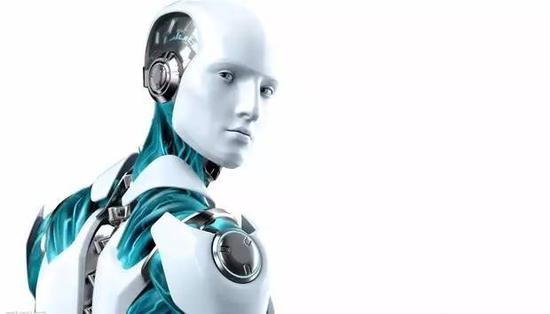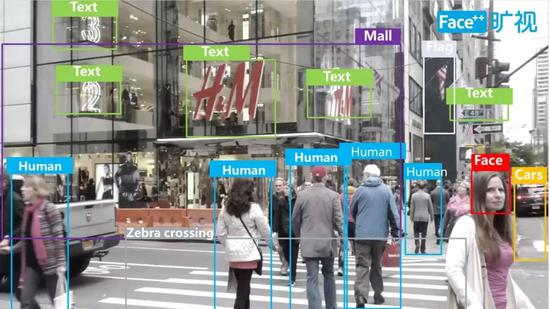博文
李开复:“人形机器人”将进入千家万户是无稽之谈 2017年08月01日 22:52 新浪综合 ...
热度 1
来源:创新工场
Facebook AI机器人创造了自己的语言,并进行了神奇的对话!
看到这样的新闻,惊悚得感觉自己就像生活在《终结者》一类的电影中,AI机器人真的发展出超级智能了吗?
有意思的是,就在几天前,Facebook创始人马克·扎克伯格还和“钢铁侠”埃隆·马斯克就“AI末日轮”隔空互怼,引发不少中美互联网大佬参与争论。
引发争议后不久,Facebook就关闭了该AI机器人项目。但据Facebook研究员回应,关闭的原因并非“失控”,而是无意义。
“两个机器人为实验性质,且并没有发明新的语言,因为他们还是在用‘i’、‘balls’、‘the’等英文单词沟通,只是没有了英语语法的这个激励项,创造了一种新的表达方式而已。”
简单来说,它们只是英语不太好。
“AI只是工具,离超级智能还很远。”创新工场董事长李开复此前曾表示,“基于我投入AI领域的科研、开发、投资相关工作37年的经验,“超级智能”、“灭绝人类”这类耸人听闻的说法,根本没有切实的工程基础。”
但人们关于“AI超级智能”的担忧却让人担心。“过度担忧可能导致大众忽视AI正在带来的巨大机遇,也会让更多更紧迫的AI问题没有得到关注,这只会捡了芝麻丢了西瓜。”
今天,美国知名新媒体Quartz刊登李开复专文,从另一个角度表达了他对AI机器人的看法:“类人”机器人只是科幻,人形机器人将马上进入千家万户的说法,简直是无稽之谈。
以下是文章全文

机器人能帮着赚钱、省钱、提高生产力,也助人们回归人性
人工智能时代的到来已经指日可待了。但是目前情感机器人的发展方向有点南辕北辙。
首先,让我们明确一下人工智能的几个要点:
人工智能擅长对目标明确的工作进行优化(但是不能创造,没有感情)。
机械控制的发展速度较人工智能软件的发展要缓慢得多。
传感器虽然得到迅猛发展,但价格昂贵、体积偏大且太耗电。
鉴于以上原因,人形机器人将马上进入千家万户的说法,简直是无稽之谈。当机器人在言谈举止各方面都与人类极其相似时,普通家庭用户对机器人的“人类素质”的期望也会变得高不可攀。仅仅这种期望所带来的失望就足以让很多公司的“未来十年让科幻小说成为现实”的展望受挫,更别提消费市场对价格的苛刻要求了。
机器人的开发要牢记实用性这一原则:机器人或能创造效益,或能节省成本,或能提高生产,或可以提供娱乐。依托现有技术制造的工业机器人将高效制造出其它机器人;商用机器人将会带来更多经济收益(例如替代保安、前台和司机等职位);家用机器人将能发挥家用电器和玩具的功能——它们简单易用且不具备任何“人性素质”。
这样的机器人未必具备人类外形。工业机器人就是在黑暗厂房(例如富士康最先进的厂房)或者配备了智能升降机仓库里(例如我们投资的开源机器人Dorabot)从事劳务的机器;商用机器人的形式和用途就更多样了:它们也许就是一排摄像头(例如旷视科技的产品),或者是一家自动商店(例如F5未来商店)。自动驾驶车将有车的外形——除了那种低速货运、功能固定的运输工具,例如机场铺设的自动车道,或者从停车场到商店、主题公园的运输设备(例如UISEE驭势科技);消费机器人也许会像一个扬声器(例如亚马逊的Echo)、一台电视机、一台吸尘器(例如Roomba)、一个教学玩具(例如奇幻工房的Dash Bot)或者一台用于家庭联系的平板电脑(例如小鱼在家)。

人工智能也会与时俱进吗?这一点毋庸置疑。声音识别技术将更精准,电脑视觉技术也会提高,SLAM技术将让机器人的动作更加流畅,机器人将会翻译,还会针对限定领域进行对话。机器人也可能会了解我们的情绪并能模仿人类的情绪。这种情绪模仿将从搞笑的、娱乐性的发展为一定程度上能产生共鸣的模仿。诚然,这种模仿也都不是自发性的。在未来数十年,机器人还不能独立进行常识性的推理、创造及规划工作,它们也不会拥有自我意识、情感及人类的欲望。那种“全知全能人工智能”尚不存在,而且现在已知的开发技术也无法开发出此类机器人。这种技术在未来数十年都不会出现,也许永远都不会出现。
人形机器人的研发对人工智能科学家充满了诱惑力,而对人形机器人的预测也顺理成章地激发着科幻小说家们的创作灵感。但是我们和人工智能有着本质区别:我们会创造,AI只会在创造的基础上优化;我们多愁善感,AI冷酷无情;我们具备常识判断能力,而AI只会从特定领域的大数据获得信息。一言以蔽之,人类所长正是AI所短,而AI所长也是人类所短。
展望未来,人类最前沿的领域将是创造及社交领域。因此,我们应该推动机器人向它们所擅长的领域发展,例如进行重复性工作、优化工作或者创造财富的实用性工作。而我们人类也应该做一些我们擅长的工作:创新、创造、社交沟通或者娱乐。
我一直倡导要开发一些实用性机器人,鼓励人们进入服务行业。但我不支持制造“类人”机器人。这种机器人开发难度大,而且永远无法满足人们的期望,因此,这种机器人的胜算不大。我分析的正确与否暂且不论,但是有一点我们需要有清晰的认识,那就是,未来十年,AI将大规模地取代那些依靠人力的、重复性的、分析性的岗位。因此,我们要肩负起创造更多社会服务性岗位的职责,而不是空想或谋划一个充斥着“不适用于人类”职位的社会。
?英文原文?
Robots should make money, save money, increase productivity, or deliver entertainment—and let humans be human
Robots should make money, save money, increase productivity, or deliver entertainment—and let humans be human
The age of artificial intelligence (AI) and robotics is upon us, but the current fad of emotional humanoid robots is not headed in the right direction。
First, let’s understand what robotics are based on:
AI algorithms which are very good at optimization of explicitly defined goals (but cannot create, and have no feelings)
Mechanical control which advances much slower than AI software algorithms
Sensors which are rapidly improving but are often still too expensive, too large, or too power-hungry
Given the above, it is ludicrous to think that human-like robots will roam our homes any time soon。 When a robot looks like a person, talks like a person, and has features like a person, home users will have unattainable human-capability expectations。 The disappointment alone will doom any company hoping to bring science fiction to the living room in the next decade, not to mention the price-sensitivity for consumer markets。
Robotics must begin with utilitarianism in mind—robots should make money, save money, increase productivity, or deliver entertainment。 There will be industrial robots that build other robots in high-volume, manufactured with today’s technologies。 There will be commercial robots that deliver economic value (such as replacing security, receptionists, and drivers)。 There will be consumer robots that mimic today’s appliances and toys, requiring no consumer education, and causing no human-capability expectation。
These robots won‘t look like a person。 The industrial robot is a giant factory run in the dark by machines (like at Foxconn’s most advanced factories), or a warehouse with smart forklifts (like our investment Dorabot)。 The commercial robot comes in various forms and applications。 It might look like an array of cameras (like our investment Megvii) or an automated store (like our investment F5 Future Store)。 The autonomous vehicle will look like a car, except will be first deployed in low-speed, freight, or fixed-function transport—such as in airport autonomous car-only lanes, or in transport from parking garages to shopping malls/theme parks (like our investment UISee)。 And the consumer robot may look like a speaker (like the Amazon Echo), a TV, a vacuum cleaner (like Roomba), an educational toy (like our investment Wonder Workshop Dash Bot), or a pad-on-steroids for family communications (like our investment Ainemo)。
Will AI capabilities increase over time? Of course。 Speech recognition will get better, computer vision will improve, SLAM will be improved to help the robot move around fluidly, and the robot will be able to translate languages, or have a dialog within limited domains。 The robot may be able to read some of our emotions, or mimic certain human emotions。 But this mimicking will go from laughable and entertaining to occasionally acceptable—and generally not genuine。 For decades to come, robots by themselves will be unable to learn common sense reasoning, creativity, or planning。 They also won‘t possess the self-awareness, feelings, and desires that humans do。 This type of “general AI” does not exists, and there are no known engineering algorithms for it。 I don’t expect to see those algorithms for decades, if ever。
Trying to make robots human-like is a natural temptation for robotics and AI scientists, and predicting humanoid robots comes naturally to science fiction writers。 But we humans simply think differently from AI。 We create and AI optimizes。 We love and AI is stoic。 We have common sense and AI learns patterns from big data in a singular domain。 Simply stated, we are good at what AI is not, and AI is good at what we are not。
In the future, the human edge will be in creativity and social interaction。 Therefore, we need to focus robotics development toward what they’re good at: repetitive tasks, optimization, and utilitarian value creation。 We should also let people do what they’re good at: innovation, creation, human-to-human interaction, and performing services。
I am an advocate of making utilitarian robots, and encouraging people to go into service jobs。 I am not an advocate of making humanoid service robots—it is too hard today, and will not meet people’s expectations; therefore they will likely fail。 Whether or not my analysis is correct, we need to be reminded that in the next decade AI will replace a massive number of manual-labor, repetitive, and analytical jobs。 We have a human responsibility to help create societal service jobs—not dream or plan a society in which all jobs come with a sign “humans need not apply。”
免责声明:本文中使用的图片均由博主自行发布,与本网无关,如有侵权,请联系博主进行删除。
全部作者的其他最新博文
- • 2018-01-12
- • 2个抓我作弊的语文老师
- • 我的专业:下海
- • 我的专业后续
- • 《乡的深情》
- • 爱情诗




